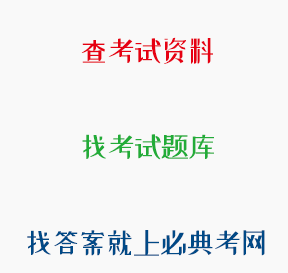正确答案: B
Flashback.
题目:22.请阅读Passage 2,完成第1~5小题。 Passage 2 The ritual of English tea time is believed to have originated in the late 1700's when Anna.Duchess of Bedford,ordered that a plate of cakes be sent up to her with her afternoon cup of tea. The Duchess chronically experienced a “sinking feeling” (what we would term “low bloodsugar” ) in the late afternoon.To tide her over the long hours between meals she turned to carbohydrates. Other royals immediately copied the Duchess,and afternoon tea parties became quitefashionable.low tables were set up in front of sofas and chairs,and the ladies found a newopportunity to show off pretty clothes,fine China.embroidered linen tablecloths and napkins,andsilver tableware. tea time was also the time to exchange juicy gossip and serve refreshments.Soon darling littlesandwiches and sweet pastries as well as scones were being arranged on decorative stands and platesfor the ladies' pleasure. The tea party mania quickly spread across the Atlantic where tea was already enjoyed as abeverage.This fondness for tea was later suppressed by the patriotic Americans during the eraimmediately preceding the American Revolution because of the unreasonable British tax on tea. However,by April 27,1776,Congress announced in the Philadelphia Packet that “the drinkingof tea can now be indulged.” The custom of afternoon tea parties was not really revived in thiscountry,though,until the mid-1800's,when Victorian ways were in vogue here.leisure-class American ladies began having “kettledrums” at 4p.m.“Kettledrums” was called that in connectionwith the term “teakettle.” Petits fours and other dainty delights were served amid Victorianopulence. A Victorian diarist,Maud Berkeley (Maud:The Illustrated Diary of a Victorian Woman,Chronicle Books,1987) gave an anecdote concerning tea time:“Mrs.Barnes had out a lovely tea-cloth for her tea-party,worked all over with cyclamens and honeysuckle.Shoggie Boucher,unusedto such dainty,contrived to slop his tea all over it.Thankful it was not I.as it was,my new featherboA.which I wore for the first time,got into my teacup,causing much alarm and merriment to all assembled.lilian Black-Barnes was,as ever,strong in adversity and wrung out the offending objectin the kitchen sink.Fear it may never be the same again,none the less.” My family,mother,and I were able to relieve some of that sophisticated elegance (minus thedrippy boa) when we had tea at the Ritz in london.The Palm Court,an open area on the groundfioor of the hotel,is a study in turn-of-the-century decor.Gilt statuary,palms,and other plants,andstylishly-set little tables beckon welcomingly under high-up,rose-tinted skylights. Our waiter brought us a selection of finger sandwiches of smoked salmon,ham,cucumber,Cheddar cheese,cream cheese,and chives,or egg salad.Scones (similar to American biscuits) wereoffered with butter,and various preserves and jellies. Along with this we were served Indian or China tea.and hot chocolate for my young daughter.Then the dapper waiter presented a vast tray holding many French pastries and cakes from which wecould choose.After several teeny sandwiches and a couple ofmarmalade-coated scones,a chocolateeclair seemed to add carbohydrate overload to carboload,but“when in England,do as the English do.” This tea feast was served between 3:30 and 5:30p.m.Around 10:00p.m.,we had regained justenough appetite to sample some fish and chips (French fries),and then we put our <u>weary</u> stomachsand ourselves to bed.
解析:推断题。quotation“引用”,flashback“倒叙”,concrete example“举例”,comparISOn and contrast“比较和对比”。通读原文,第六段第一句“However,by April 27,1776,Congress announced in thePhiladelphia Packet that ‘the drinking of tea can now be indulged.’”和第七段进行了引用,故排除A。倒数第四段到倒数第二段运用例子来描述英国的下午茶,故排除C。全文将英国下午茶和美国的下午茶进行对比,故用到了对比手法,排除D。fiashback“倒叙”,经常用于小说故事的描述中,本文并没有涉及。故本题选B。
学习资料的答案和解析:
独特性
稳定性
整体性
功能性
呜凤
前制度化教育阶段
- 材料: 李老师是一名中学美术教师,他常常说:"美术课堂不仅
- 下列选项中,不属于15世纪到17世纪地理大发现时期的航海家是(
- 根据我国食品卫生法的规定,食品添加剂是为改善食物的色、香、味
- What is missing at the discourse level between the two sente
- 某私人企业在某省投资兴建了一所中学,学校拟聘请一位外籍人士担
- 德国历史上长期处于城邦分治的封建割据状态,直至1871年才统一
- We're all keeping our crossed that the surgeons do not find
- 人类在两干多年前轴心时期所创造的人文经典,那个历史时期留下的
- 某县教育局长马某挪用教育经费,建造教育局办公大楼,对于马某,
- 我国著名药学家屠呦呦获得诺贝尔医学奖,这是源于她在创制新型抗

 川公网安备 51012202001360号
川公网安备 51012202001360号